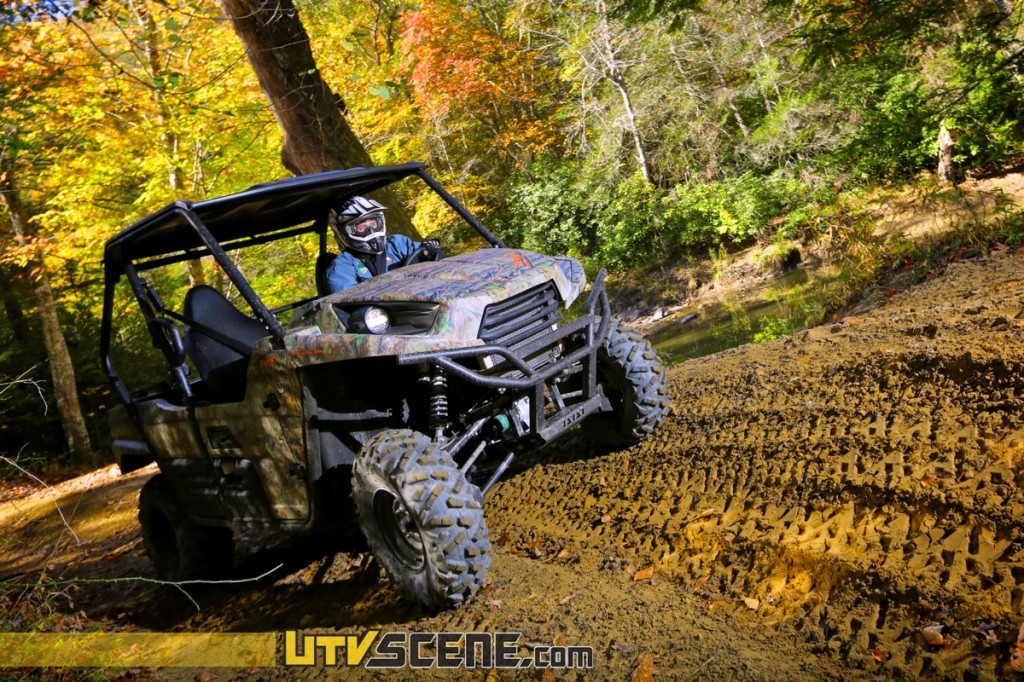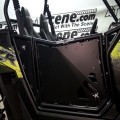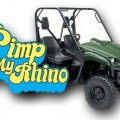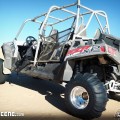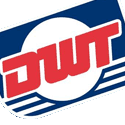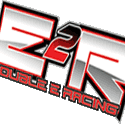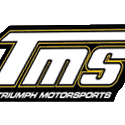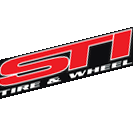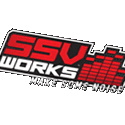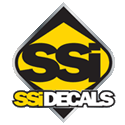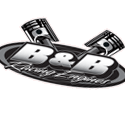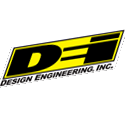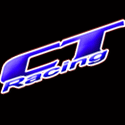2014 Kawasaki Teryx 800 Ride Review
- Updated: February 5, 2014
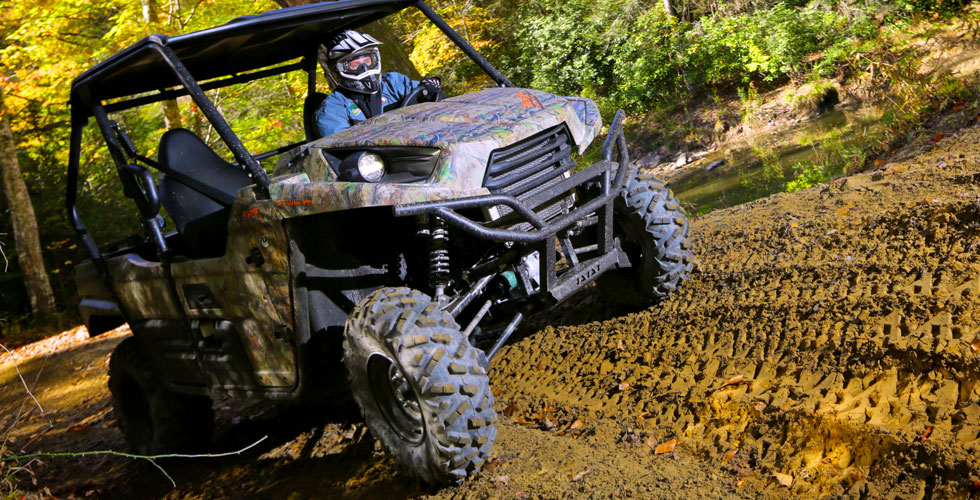
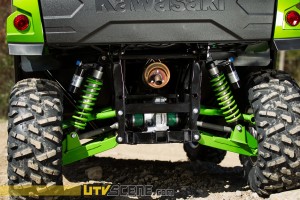 Chassis and Suspension
Chassis and Suspension
Like I said, nothing is taken from the old Teryx except its name. The two-seater Teryx did however adopt its new frame from Kawasaki’s four-seater Teryx4. With this, overall length is increased nearly ten inches and width is increased three inches. The added width really helps to plant the vehicle on all fours. The last thing you want in a Side x Side is a tipsy feeling. And the added length sure does offer a lot of cargo space where two additional seats would be found in the four-seater, but more on that later.
Kawasaki’s Double X one piece, all-welded frame uses cross beams in the shape of an X that ideally bridge each of the boxed sections of the frame. This significantly stiffens and strengthens the frame and greatly reduces frame-flex. Frame members are constructed of large diameter high-tensile steel tubing, no cheap stuff here, this baby is rugged. As it should the roll cage is also rugged and pairs nicely with the Double X frame. The certified Roll-Over Protective Structure (ROPS) roll cage almost appears to be aftermarket with its added C-pillar section in the rear. The roll cage extends all the way out to the edges of the bodywork to maximize cockpit space and help shield the chassis and bodywork from damage.
I was impressed that the Teryx didn’t go the way of all work and no play. Kawasaki could have easily fitted four ordinary shocks that would have worked great out on the farm but not elsewhere. They recognized that potential buyers want a work vehicle that can also play hard, so they worked hand in hand with Fox Shocks to develop the perfect shock solution. Four preload and 24-way compression adjustable Fox Podium piggyback reservoir coil-over shocks are mounted to Kawasaki’s extremely beefy dual A-arms on all corners. The machine gets eight inches of travel up front and 8.3” in the rear, ground clearance comes in at 11” and the LE’s stylish color-matched springs and suspension arms draw even more attention to its premium suspension package.
I did bottom the rear on occasion but I have to admit I was guilty of trying to jump the machine as often as possible, and purposely aimed it towards heavy hits at high speeds. I tend to drive test units hard to somewhat simulate long term abuse in a short period of time. I’m happy to report I didn’t feel any shock fading, the machine soaked up the rough stuff and handled exceptionally well. All in all you’re going to love the plush ride and the ability to easily adjust the shocks for the terrain you drive it in, hauling weight in the bed or pulling a trailer.
Tires, Wheels and Braking
Keeping with their quality agenda, Kawasaki opted for 6-ply 26” Maxxis Big Horn 2.0 tires that were specifically created for the Teryx. I feel the tried and true Maxxis Big Horns offer a good tire choice. Not only were there no flats in our hundred-mile journey not one person got stuck. Forward traction is equally as important to a tire that allows the machine to aggressively corner well. 26″X9″ are found up front and 26″x11″ in the rear, all four are mounted to a 12” cast aluminum wheels on the LE model
The stopping department is equally as impressive and I wouldn’t want anything less in a heavy UTV. Up front you’ll find high-performance hydraulic disc brakes that use 200mm rotors and dual-piston calipers. The brakes are recessed within the cast aluminum wheels to help keep them away from dirt, rocks, water and debris, while sturdy steel-braided lines help keep pedal feel crisp and progressive. Kawasaki went with its unique sealed internal wet brake system in the rear. I’m not all-in on this – I would rather have a dual-piston caliper disc brake on each wheel, but I do understand where they were going with this rear braking system. Since it’s completely sealed from mud, water, dust and debris it offers good reliable maintenance-free braking in the wettest or dry-est conditions imaginable.
